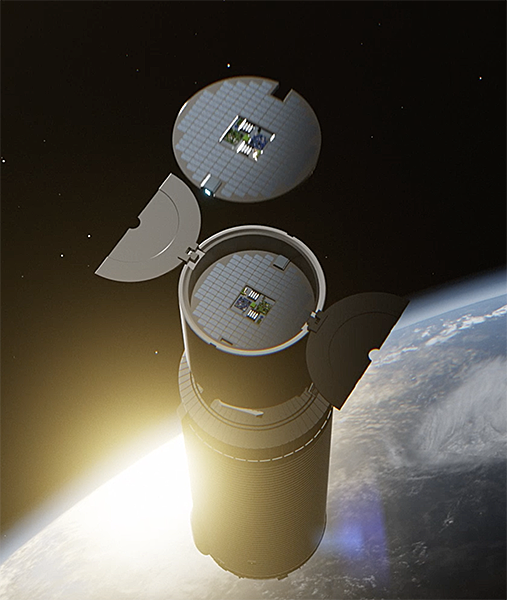
About DiskSat
DiskSat is an innovative approach to small satellite architecture, utilizing an alternate approach that decouples the payload and bus across the standard interface, allowing for a more ride-share friendly design while eliminating volume-constraints of standard CubeSats. This approach offers a variety of improvements, such as cost efficiencies and shorter cycles for design, build, integration, and test schedules.
Features
- Up to 200W power
- Standardized structure and interfaces
- 2D planar geometry
Advantages
- More Aperture
- Maneuverable
- Streamlined AI&T and manufacturing
Benefits
- Reduction in launch costs
- Supports multiple orbits and destinations
- Diverse mission applications
Example Mission Applications
High-Delta-V Required:
DiskSat’s optional electric propulsion unit with its high power, low mass, and 5000 Newton-seconds propulsion, enable high-delta-v missions, including deep-space applications and orbital transfer between different orbital regimes.
Communications:
DiskSat’s platform offers both high power generation and a large surface area, enabling either powerful radios with high-gain antennae or multiple antennas for frequency agility, thus benefiting power- and/or antenna gain-constrained high bandwidth communication systems and RF missions.
Positioning, Navigation, and Timing (PNT):
DiskSat’s large aperture and high power could revolutionize PNT missions by hosting multiple GPS and GNSS antennas, detecting weak signals from unconventional orbits, and enabling the rapid deployment of multi-satellite constellations through stacking and containerization.
Aerospace is Redefining the Future of Small Satellites

DiskSat: A New Form Factor For Small Satellites





